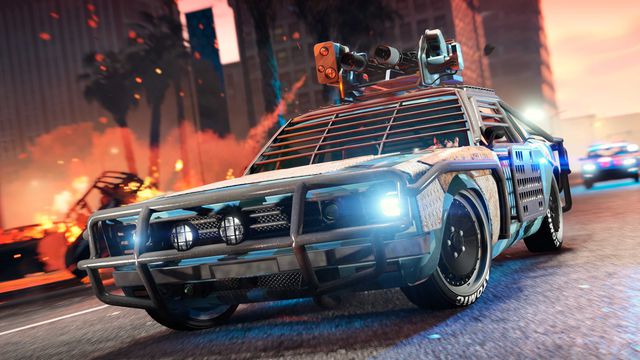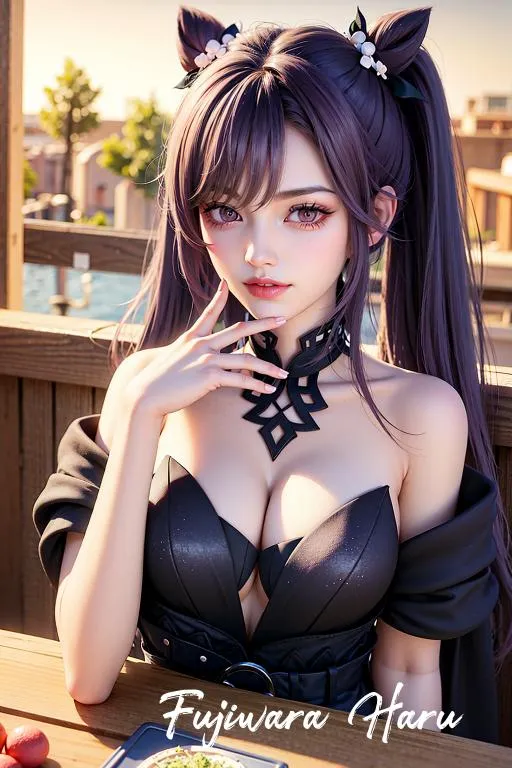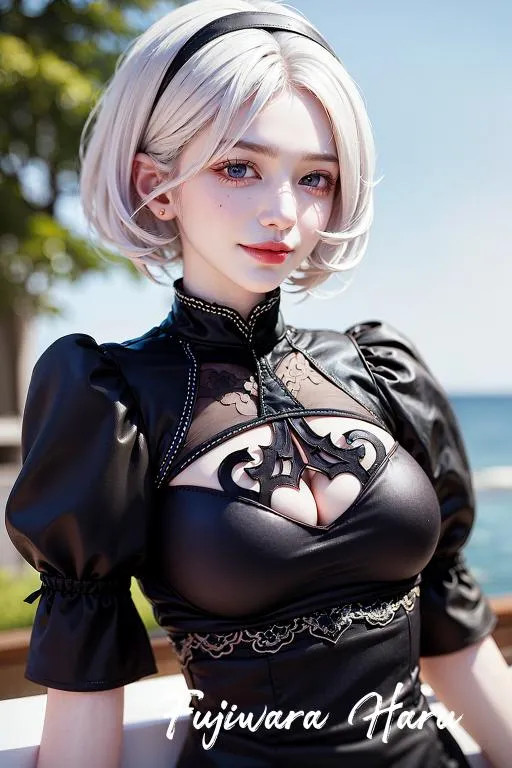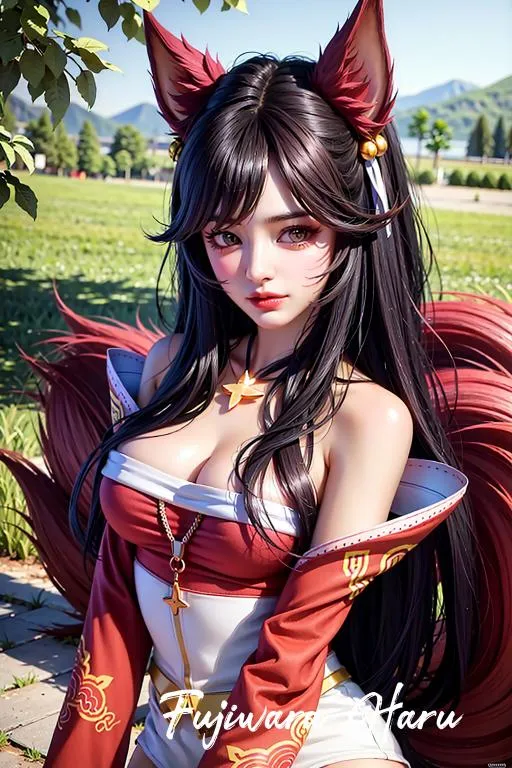The first fight in Tekken 8’s story mode would probably be the finale in just about any other fighting game. A multi-stage, knockdown, drag-out slobberknocker between Jin Kazama and Kazuya Mishima that results in a crashed helicopter, leveled buildings, and an aerial sequence that wouldn’t look out of place in The Matrix Revolutions or Man of Steel. All of this to say… It's incredibly hype. This isn’t a spoiler, by the way. It’s the first ten to fifteen minutes. And it only gets more interesting from there. But before we get into all that, let me set the scene, and introduce the players.
I spent about three hours playing Tekken 8 this past week. I started with the story mode. From the word go, you’ll notice how incredible everything looks, to the point that certain transitions between cinematics and gameplay are sometimes hard to spot. And then there are the fights themselves: alternatively brutal, wild, and unique affairs that change depending on what is happening in the story. What struck me most was how intimate many of the fights felt. Things going badly for your character in the cinematics? You might start the next scrap at lower health, or be unable to use certain techniques. Alternatively, you might also have access to several moves that would be too powerful for normal play or gain access to new stuff when the plot calls for it. There’s a sense of continuity and escalation to the fights that many fighting game story modes don’t have, and being able to fight the same character several times in succession helps sell the uniqueness of their fighting styles, their relationships with the other fighters, and the stakes at play.
I’ll spoil as little as possible, but by the time I was out of the first chapter, the stage was set for the next King of Iron First tournament, old faces were banding together to take down Kazuya, fan favorites were fighting it out for tournament slots, Jin was facing down his (literal) demons, Kazuya was hamming it up for the cameras, and new characters like Reina were adding an air of mystery to the whole affair. How would it all play out? I didn’t know, but I was excited for each fight. In fact, I was so invested in the whole thing that I nearly didn’t recognize the point at which I was supposed to stop playing. Whoops.
Producers Katsuhiro Harada and Michael Murray couldn’t give me an exact length for Tekken 8’s story mode, but they did say it would be about one and a half times as long as Tekken 7’s, which is impressive given the sense of scale and attention to detail on display, as well as how many members of the main cast were meaningfully involved in the sections I saw. Of course, that number doesn’t include the individual character episodes, one for each of the 32 members of Tekken 8’s launch roster, which I unfortunately wasn’t allowed to touch.
After about an hour with the story mode, I switched over to Arcade Quest, though I could have gone almost anywhere in the large part of Tekken 8 Bandai Namco made available to me. I picked Arcade Quest for two reasons: first, because, as someone who found my love of fighting games in the arcades of yesteryear, I was eager to see how Tekken Project had approached the mode after seeing so much of it (but being unable to play it) during our October IGN First coverage. Second, because Murray told me Tekken Project envisioned Arcade Quest being the second stop for most players after they completed the story mode. I wanted to see how well that path worked.
If the story mode and the father-son showdown between Jin Kazama and Kazuya Mishima is where most lapsed and first-time players will be introduced to Tekken’s story and world, Arcade Quest is where they’ll pick their character and start their journey toward Tekken mastery. This mode drops you into the shoes of a Tekken newbie who has joined up with a squad of Tekken fans excited about Tekken 8. After witnessing a tournament won by the “the-only-thing-that-matters-is-winning-” Orochi (who, unsurprisingly, looks like, dresses like, and plays Kazuya Mishima), your crew decides to enter the Tekken World Tour and prove him wrong in the most fighting game way possible: by punching him in the virtual face.
First, though, you’ll need to learn how to play Tekken, and that’s just what Arcade Quest is designed to do. Your friend Max, something of a Tekken expert, will sit down and show you the basics, teaching you how to do basic combos or use mechanics like Heat Smash. In most fighting games, you’d be sped along to the next lesson, but after Max teaches you a couple things, you’re turned loose in Gong, your small local arcade, which, according to Harada and Murray, is more representative of a Japanese arcade than some of the other ones you’ll encounter later on.
From there, you’re free to challenge other players, each with their own different playstyle. Of course, you’ve got your core group of friends: Prim is all about using Tekken’s character customization to show off her style, and her character reflects that; Beat is also new to Tekken, and focuses on landing flashy moves; Nick is the competitive type, and secretly hopes to farm you for rank points; and Max just wants you to have fun. But you can challenge anyone you run into. Each one seems designed to teach you something. One will use different wake-up options each time to throw you off guard. Another really likes to use his Heat options. My favorite was a player hidden in the back who was a much higher rank than everyone else at Gong. He played an absolutely nasty Feng Wei, and smoked me both times I played him.
As you play, Max will give you challenges to complete using the things he’s taught you, and you’ll snag rewards for doing so. Other characters will offer rewards for completing certain tasks, like using a Heat Smash or performing a specific launcher, while you play them. Meanwhile, a selection of your character’s useful moves will be displayed on-screen to help you get started.
I used the opportunity to learn Victor, as I hadn’t had a chance to play him in previous builds. His fast and flashy, sword-and-gun-focused style is just as cool as it looks in his trailer. I debated sticking with him for my whole run with Arcade Quest, but then I had an idea: since I was going to learn about my character just by playing them in this mode, why not play Reina, the other totally new addition to the cast?
I fell in love with her immediately, mostly because she reminded me of Lidia, the Prime Minister of Poland and my main from Tekken 7, if she also had electrics. A fast, aggressive stance character with great buttons and good damage? Yes, please. Plus, she’s got some great costumes and enters her matches sitting on a throne. What’s not to like? I stuck with her almost exclusively during the rest of my time with Tekken 8, taking breaks only for Azucena and Leroy.
After playing around in training mode to get a better glimpse of Reina’s kit, running a few sets with a friend who also happened to be there - good games, Kai - and sitting down for some Tekken Ball (which is just as good and ridiculous as you remember), I hopped into Super Ghost Battle. I’d gotten a glimpse of it during the CBT, but here there was a huge list of Ghosts to challenge, so I started at the bottom and worked my way up.
Ghosts are still remarkably impressive. They play like real people, tendencies and all, for both better and worse. Like to default to a particular roundstart option? Your Ghost will do that, too. Move a certain way? Ditto for your Ghost. Default towards certain wakeup and oki options? Your Ghost will emulate it. But what impressed me most was how fast the Ghosts learn, and I’m not just talking about your Ghost, which will greatly resemble you after just a few games and literally learns on the fly. I’m talking about “started responding to my offense and forcing me to go to the next layer” levels of learning in real-time, the sort of thing you see from real players, particularly at higher levels of play.
Obviously, the Ghost was just reacting the way the player it’s based on would, but when I sat down with Harada and Murray after my play session, I had to ask how they did this. Fighting game AI is notoriously tricky to implement, and even the best ones often default to patterns that are easy to notice if you pay attention. That was just how the Ghosts worked, they told me, and yes, they did learn in real-time. Harada speculated that Tekken 8’s Ghosts might be the highest-level AI available in any fighting game. We’ll need to play the final game to know for sure, but based on what I’ve seen so far, I’m not inclined to disagree.
I left the event feeling that way about much of Tekken 8. It’s rare for a fighting game to truly move the needle and advance the genre because of how well-established and codified it is. Even truly great fighters often don’t manage to do it. But over the last few years, we’ve had several fighters, from Guilty Gear: Strive to Street Fighter 6, push the genre forward in exciting ways. Tekken 8 feels like it has the potential to be the next name on that list. It’s a tall order, and we won’t know until January. But if you told me Teken 8 was highly seeded in its bracket, I’d believe you. We’ll just have to wait until January to run the sets and find out how everything holds up on the biggest stage, when the lights are shining brightest.





